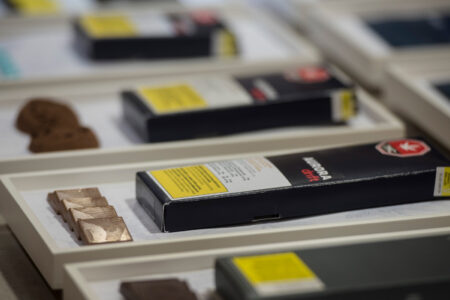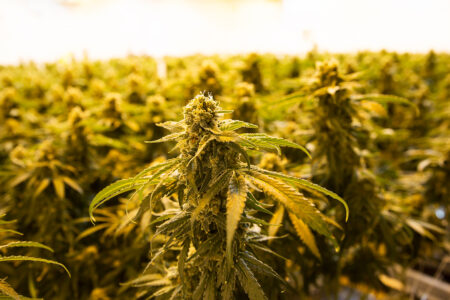
The federal Department of Finance issued its long-awaited legislative and regulatory proposals for the taxation of cannabis in November 2017, delivering on a Liberal Party election promise to regulate the distribution of cannabis “with appropriate federal and provincial excise taxes applied.” The resulting legislation was brought in by way of amendments to the Excise Act, 2001, which effectively place cannabis producers within the existing rules for excise duties that cover producers of tobacco, wine and alcoholic spirits, with modifications as applicable. (Beer producers, for those who noted the omission, are taxed under different legislation: the Excise Act from 1921.) The new cannabis duties will come into effect (with some transitional rules) when legalization of recreational cannabis becomes effective in October.
But as with many elements of legalization and regulation of recreational cannabis, there are unresolved issues around the application of the excise tax that remain to be dealt with: namely, how the tax will affect the affordability of medical cannabis, and how the tax will impact Indigenous peoples, their communities and companies.
Sharing the tax revenues with the provinces
Excise duties are conceptually different from sales taxes, in that the tax is payable by the producer or importer of the good, rather than its purchaser or consumer. In practice, however, the producer will have to recoup the duties as a cost of production, which increases the cost of the end product sold to consumers. This is why such taxes (similar to customs duties) are considered “indirect taxes” on consumers. Provincial governments are not allowed to impose indirect taxes; they are limited by the Constitution to “direct taxation within the province” (subsection 92(2)).
In December 2017, the federal government reached an agreement with all provincial and territorial governments (except Manitoba’s) on a “coordinated cannabis taxation framework” to share the revenues from a federal excise duty for the first two years after legalization. Under the agreement, 75 percent of the tax revenues will flow to participating provinces and territories, with the federal government receiving the remaining 25 percent. The federal portion will be capped at $100 million annually for the first two years, with any additional revenues being distributed to the participating provinces and territories.
The excise duty will be imposed at a variable rate. Generally, producers must pay each month the higher of two amounts: either $1 per gram of cannabis included in the products or used in the production of the cannabis sold in the previous month, or 10 percent of the price of the products they have sold in the previous month. The excise duty applies to most cannabis products packaged for retail sale and available for legal purchase (other than specified exclusions); at the outset of legalization, these will include fresh and dried cannabis, cannabis oils, and seeds and seedlings for home cultivation, whether for recreational or for medical purposes.
However, the basic $1 per gram/10 percent excise duty rate is not the final word and could vary across the country. A province or territory may ask for an adjustment to its excise duty rate to reflect differences between its sales tax rate and higher rates in other provinces and territories. For example, Alberta, which has only a 5 percent GST rate, might request a higher excise duty rate to compensate for the lower tax revenues that it will get from sales of cannabis by comparison with what Nova Scotia, which has a 15 percent HST rate, will bring in.
The excise tax and medical cannabis
One contentious question that appears to have been settled, at least for now, by the legislation was whether the excise duty would apply to medical cannabis. Because prescription medications are tax-exempt, many argued that medical cannabis should not be taxed either. But the excise duty legislation does not distinguish in any way between cannabis produced for use on the advice of a physician and recreational cannabis: all cannabis producers must pay the duty.
The only concessions that the government made to patient advocates in this regard was to include a couple of exemptions. One is for pharmaceutical products approved by Health Canada that are derived from cannabis and that can be acquired only through a prescription. Another is for products with low concentrations of THC, the psychoactive ingredient in cannabis. The government said it was “recognizing the non-addictive, potentially therapeutic role of low-THC cannabidiol oils, which are sometimes used with children facing certain medical conditions.” Both categories of exempt products may become more popular as the industry develops. But at present, the vast majority of medical cannabis consumers use taxable products that do not fit within either exemption.
In the case of all other medical cannabis, the duty will be a new cost that was not imposed on producers before legalization of recreational cannabis. As noted in an earlier Policy Options article, more than half of people who use cannabis for medical purposes have reported that they can never or only sometimes afford to buy enough to relieve their symptoms.
A movement is afoot to advocate for the removal of excise duty on medical cannabis by way of petition to the government. Additionally, to the extent that the increased cost of medical cannabis puts a vulnerable population at risk, the duty may be open to legal challenge.
Sharing the revenues with First Nations
Another issue that appears unresolved is how the excise duty will be paid by and shared with First Nations across Canada. The discussions between the federal government and the provinces regarding tax sharing did not include First Nations representation until it was too late. First Nations producers, at least individuals and partnerships on reserve, may not even be required to pay the excise duty, due to their exemption from taxation under section 87 of the Indian Act (Canada). It is less clear how First-Nations-owned corporations might benefit from this exemption. At least one licensed producer has indicated that its partnership with First Nations will provide some unspecified advantages connected to a favourable taxation regime for cannabis production on sovereign Indigenous lands.
On the other hand, First Nations and other commentators have pointed out that the funds raised by the excise duty will be needed to combat the expected social challenges of legalization. A proposal by the First Nations Tax Commission for First Nations to implement their own cannabis taxes on reserve was intended to go beyond an excise duty, which would have taxed only licensed producers situated on reserve (which are relatively few, at least at present), and include a form of sales tax for consumers on reserve as well. A First Nation can currently opt in to the First Nations GST, which would make most sales of goods and services (including cannabis) taxable in its territory. But the proposal to allow taxation of cannabis specifically was not taken up.
Cannabis is distinct from alcohol and tobacco, particularly in its medical applications. Its treatment by tax authorities is also unique: only for cannabis will excise duty be shared between the federal and provincial governments. This novel arrangement has led to questions about whether concerns of First Nations have been adequately addressed. (Other stakeholders, such as municipalities, have also raised questions, not discussed here.) As we move into the era of legalization of recreational cannabis, these are issues that will warrant continued scrutiny.
This article is part of The Economics of Canadian Cannabis special feature.
Photo: Shutterstock/By Stefan Malloch
Do you have something to say about the article you just read? Be part of the Policy Options discussion, and send in your own submission. Here is a link on how to do it. | Souhaitez-vous réagir à cet article ? Joignez-vous aux débats d’Options politiques et soumettez-nous votre texte en suivant ces directives.







